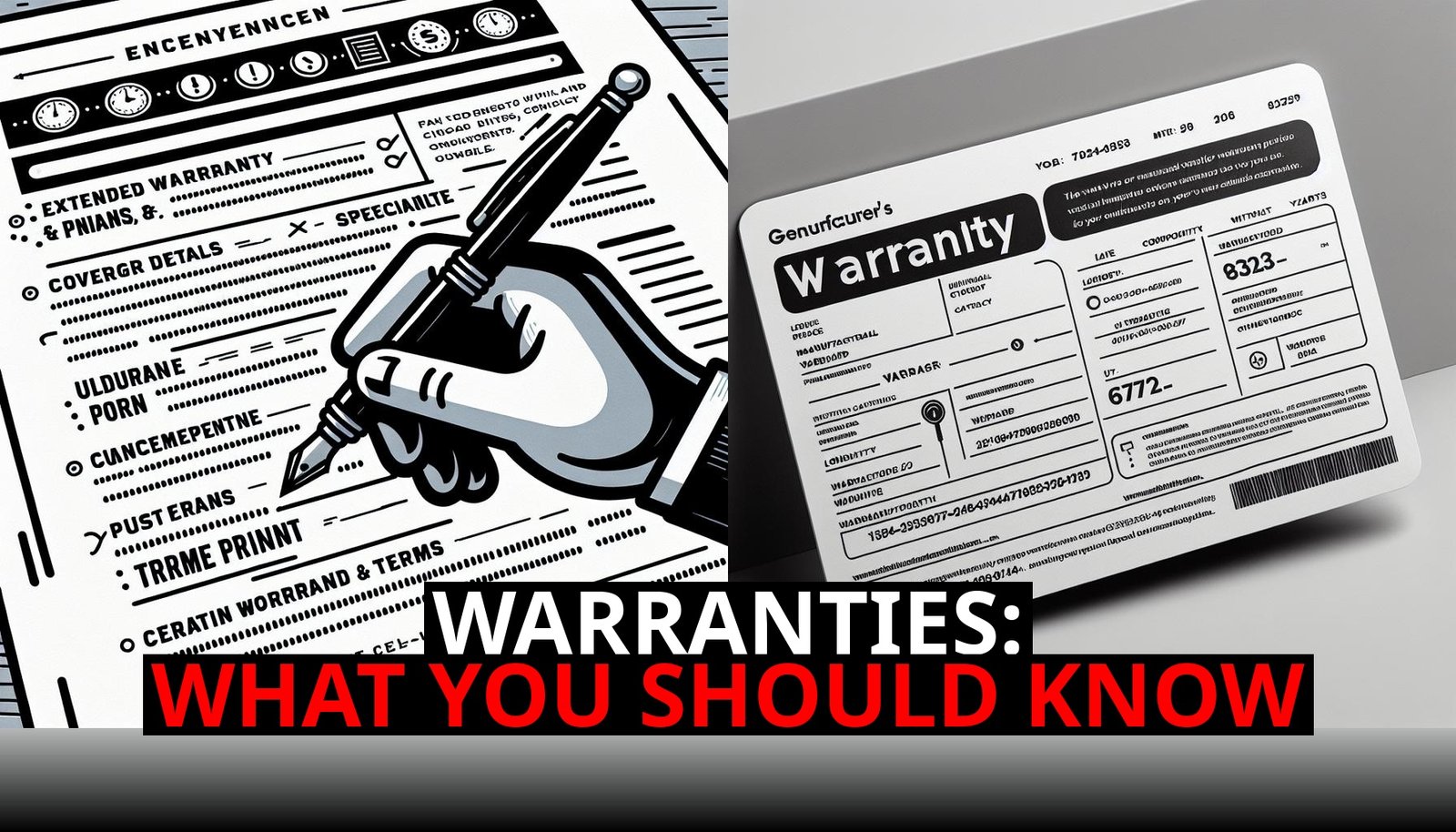You’ve just bought a new gadget, car, or appliance, and you’re excited to start using it. But as you’re about to finalize your purchase, the salesperson asks if you’d like to add an extended warranty. It sounds like a smart move—more coverage means more protection, right? But before you make that decision, let’s take a closer look at how extended warranties stack up against the manufacturer’s warranty that already comes with your product. Do you really need both, or is one enough?
Understanding The Manufacturer’S Warranty: What’S Already Covered
First, let’s talk about what you’re already getting without spending an extra dime. Most products come with a manufacturer’s warranty that covers defects in materials and workmanship. This warranty is typically included in the price of the product and can last anywhere from 90 days to several years, depending on the item.
For example, many electronics and appliances come with a one-year warranty, while cars often include a basic warranty that lasts three years or 36,000 miles, whichever comes first. These warranties are designed to cover any issues that arise due to manufacturing defects—essentially, if something breaks that shouldn’t have, the manufacturer will repair or replace it at no cost to you (Credence”>Source“>Source Research).
The Role Of Extended Warranties: More Coverage Or More Of The Same?
Extended warranties, sometimes called service contracts, are optional add-ons that extend the coverage period beyond the manufacturer’s warranty. They promise to cover repairs and sometimes even offer additional perks like free maintenance or roadside assistance. But here’s the catch: extended warranties often overlap with the manufacturer’s warranty, meaning you’re paying for coverage you already have, at least for the first part of the extended warranty period.
For instance, if you buy a three-year extended warranty on a laptop that already comes with a one-year manufacturer’s warranty, the first year of that extended warranty is redundant—you’re paying for something you don’t need until the manufacturer’s warranty expires (BlueWeave”>Source“>Source Consulting).
Overlapping Coverage: Are You Paying Twice?
One of the biggest issues with purchasing both an extended warranty and relying on the manufacturer’s warranty is the overlap. During the period when both warranties are in effect, you’re essentially paying for double coverage. This redundancy doesn’t provide any additional protection; it simply means you’ve spent money unnecessarily.
Moreover, many consumers don’t realize that the terms of the extended warranty may not be as generous as those of the manufacturer’s warranty. For example, the manufacturer’s warranty might cover parts and labor with no deductible, while the extended warranty could require you to pay a service fee or deductible each time you make a claim. In some cases, extended warranties might even exclude coverage for certain repairs that are included in the manufacturer’s warranty (BlueWeave”>Source“>Source Consulting).
When Might An Extended Warranty Make Sense?
While extended warranties often overlap with manufacturer’s warranties, there are situations where purchasing an extended warranty could be beneficial:
– Long-Term Ownership: If you plan to keep the product well beyond the manufacturer’s warranty period, an extended warranty might provide peace of mind for potential future repairs.
– High-Cost Repairs: For certain products, especially high-end electronics or appliances with a history of costly repairs, an extended warranty could save you money in the long run. However, it’s important to research the product’s reliability before making this decision.
– Additional Services: Some extended warranties offer services that aren’t covered by the manufacturer, such as accidental damage protection, routine maintenance, or roadside assistance for vehicles.
Alternatives To Extended Warranties: Self-Insurance And Credit Card Perks
Instead of buying an extended warranty, consider self-insuring by setting aside the money you would have spent on the warranty in a savings account. This way, if something does go wrong after the manufacturer’s warranty expires, you’ll have the funds to cover the repair or replacement without paying for unnecessary overlap.
Additionally, many credit cards offer extended warranty protection as a perk, automatically extending the manufacturer’s warranty by an additional year or more at no extra cost. This can provide similar coverage to an extended warranty without the additional expense (Credence”>Source“>Source Research).
The Bottom Line: Do You Need Both?
In most cases, the manufacturer’s warranty provides sufficient coverage for the initial period of ownership, and an extended warranty may not be necessary—especially if it overlaps with what you already have. Before deciding, it’s crucial to weigh the costs and benefits, consider how long you plan to keep the product, and explore alternatives like self-insuring or leveraging credit card perks.
Remember, the goal is to protect your investment without overspending on unnecessary coverage. By understanding the differences between manufacturer’s warranties and extended warranties, you can make a more informed decision and keep your wallet intact.













